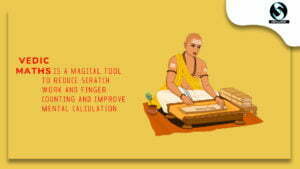A puzzle is a game or problem that is designed to test a person’s knowledge or creativity. Of all the puzzles available, Math puzzles make up at least half. These problems require logic and calculation to reach the answer. Furthermore, they have specific rules or conditions that the solution must satisfy.
Math puzzles are a great way to increase student engagement and logical skills. Thus, we have listed down 11 interesting math puzzles for kids of all ages.
Origin of Math Puzzles
Math puzzles date back to the ancient Egyptians and Greeks. The Rhind papyrus is a great example of Egyptian related math puzzles. Similarly, over 2000 years ago, people of Ancient Greece also tried to crack math problems involving trisecting an angle, doubling the cube etc.
Types of Math puzzles
1. Math riddles
Riddles combine critical thinking with basic math skills. Thus, giving your kids math riddles to solve once in a while is quite useful. Some riddles are given in the table below.
Examples of math riddles with answers
| Math riddle | Answer |
| A grandfather, two fathers and two sons went to watch a movie together. Everyone purchased one movie ticket each. How many tickets did they buy in total? | 3 (the grandfather is also a father and the father is also a son) |
| A duck was entrusted with $9, a spider with $36, a bee with $27. Based on this information, how much money should be given to a cat? | $18 ($4.50 per leg) |
| A zookeeper had 100 pairs of animals in her zoo. If two pairs of babies are born for each of the original animals, and then sadly 23 animals do not survive. Thus, how many animals do you have left in total? | 977 animal (100 x 2 = 200; 200 + 800 = 1000; 1000 – 23 = 977) |
| A cell phone and case cost a total of $110. The mobile phone costs $100 more than the phone case. How much was the cell phone? | $105 (not $110) |
| Maria went to the store to purchase a loaf of bread for dinner. She had 2 quarters, 4 dimes, 3 nickels as well as 2 pennies. The total price of the bread was $0.82. She vowed to make sure she had 1 coin remaining after completing the purchase. Therefore, which coins did she have left after buying the loaf of bread? | One of the quarters |
| How can you add eight 4s together so that the total adds up to 500? | 444 + 44 + 4 + 4 + 4 = 500 |
| Jennifer passed away of old age on her 26th birthday. How is this possible? | She was born on February 29th of a leap year |
| If 66 = 2, 8123=2, 999 = 3, 0=1, 8=2, 9696=4, 88=4 and 98=3 , then what does 816982 equal? | Six, each circle is equal to one. For example, 6 has one circle, 8 has two circles in it. |
2. Prodigy

Prodigy is a free, mathematical games platform that children love to use while practising math skills. Although in the traditional sense it is not a math puzzle, Prodigy uses several similar principles to help develop mathematical fluency and critical thinking skills. Furthermore, kids complete curriculum-aligned math questions to earn coins, which they can use to collect pets and go on quests. You can also deliver different math content to each student, help them prep for standardized tests and easily analyze their achievement data.
3. KenKen
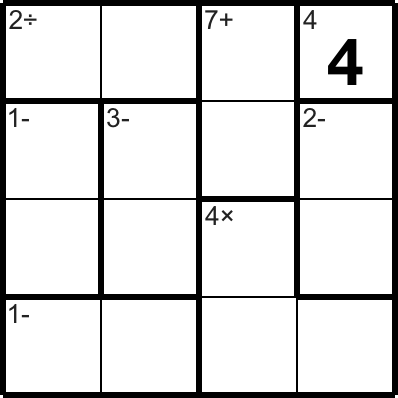
KenKen is a popular, grid-based numerical puzzle. It looks like a mashup between a number crossword and sudoku grid. Invented by a famous Japanese math professor, Tetsuya Miyamoto, in 2004, it is featured daily in The New York Times as well as other newspapers. It challenges students to train their basic math skills while applying logic and critical thinking skills to obtain the answer.
KenKen was developed as a tool to improve math and logic skills in a fun as well as understandable way. The puzzle encourages independent thinking, concentration, emphasises trial and error as well as perseverance.
How to complete a KenKen?
- Fill each square cell in the puzzle with a number from 1 to the size of the grid. For example, in a 6×6 grid, use the numbers 1, 2, 3, 4, 5 and 6.
- Use a number exactly once in each row and column.
- The numbers in each box should combine to give its target number only using the indicated math operation. Numbers can be repeated as long as the second rule is not violated.
- Each puzzle can be solved using only logical deduction. Harder puzzles require more complex deductions.
4. Pre-algebraic puzzles
Pre-algebraic puzzles are a great way to get your kids ready to perform basic functions. They encourage problem-solving skills, promote abstract reasoning as well as challenge students to think critically about the problem. An added bonus is that kids who experience math anxiety find the lack of complicated questions reassuring and thus, are more willing to find a solution.
For example,
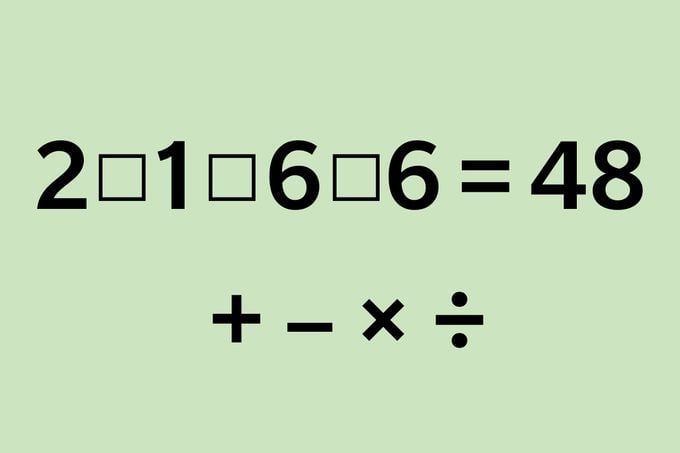
Can you correct this equation using three of the four symbols (+, –, x and ÷)? The order of operations doe not matter, and no fractions or negative numbers are involved.
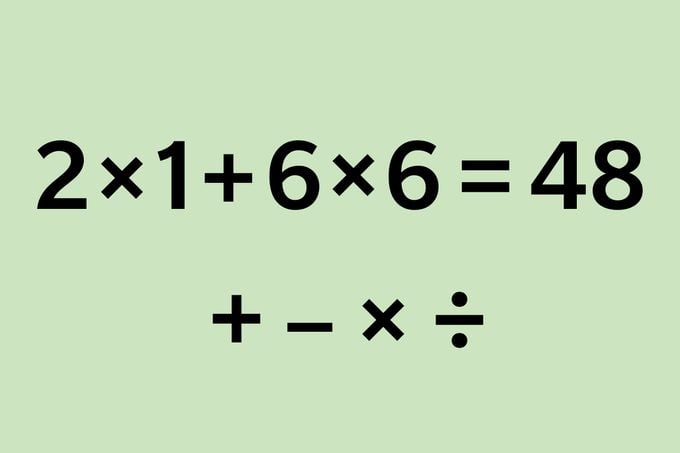
5. Kakuro
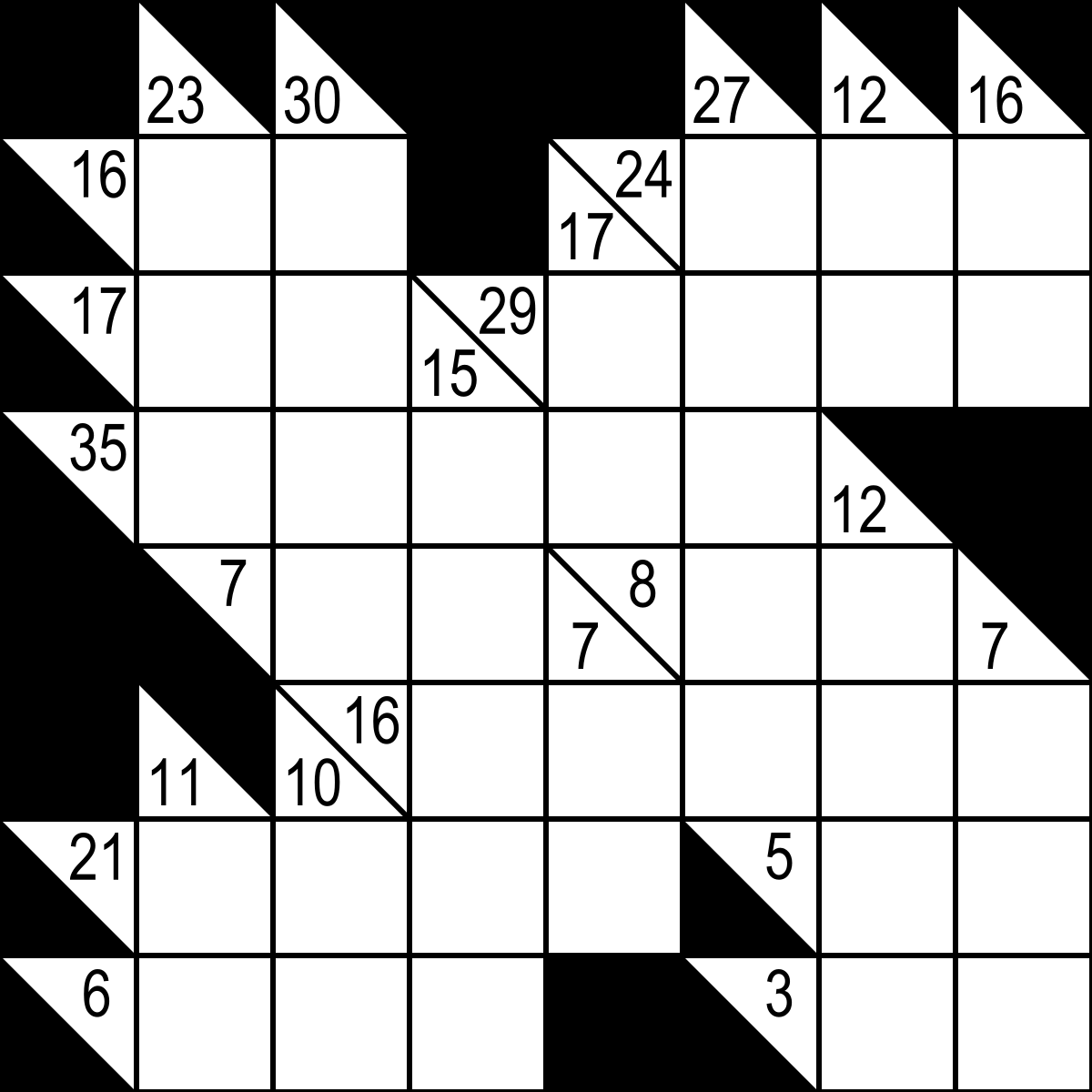
Kakuro, also known as Cross Sums is another math crossword puzzle. Here, players must use the numbers between one and nine to reach the clues on the outside of the row. Smaller grids are easier for younger players, but increase the difficulty as your kids get better at the game. The puzzle teaches kids both addition and critical thinking.
6. Magic square

Magic squares originated approximately a thousand years ago. They were introduced to Western civilization via translated Arabic texts during the Renaissance. Magic squares are available in a variety of sizes. However, the three by three grid is the most suitable for young students. The puzzle is also great if your kids are tactile learners. You can use recycled bottle caps and label each with a number from one to nine. Then, have your kids arrange them in a three by three square such that the sum of any three caps in a line (horizontally, vertically and diagonally) equals 15.
7. Tower of Hanoi
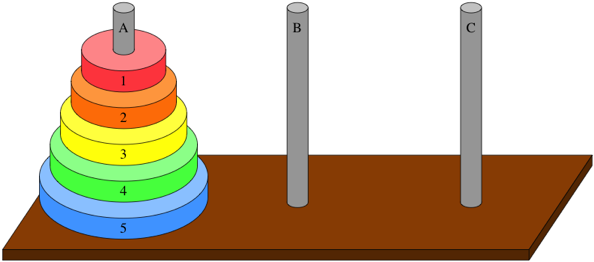
This interactive logic puzzle was invented in 1883, by a French mathematician named Edouard Lucas. According to legend, there is a temple with three poles and 64 golden disks. Priests move these disks to different poles according to the game rules to fulfil a prophecy that proclaims that the world will end once the puzzle is complete. The story also states that it will take the priests about 585 billion years to complete the puzzle.
To play the game, start with three disks stacked on top of each other. Then, the player must move all of the disks from the first to the third pole without stacking a large disk on top of a small one. Older students can also learn about the function behind the solution which is:
the minimum number of moves is given by the equation 2n-1, where n is the number of disks.
8. Tangram

Originated in China, Tangram puzzles were brought to Europe during the early 19th century. When playing the game, the player makes use of seven flat, geometric shapes to make silhouettes. While Tangrams are generally made out of wood, you can DIY a set for your kids using felt or coloured paper. Tangrams are an excellent tool for children who enjoy being able to manipulate their work. Furthermore, there are over a thousand published problems to keep your kids busy.
9. Math crossword puzzles
A crossword is the most popular puzzle as it is good for both kids and adults. Math crosswords are no different. The basic concept behind the puzzle is highly adaptable math skills. Here, instead of words, kids use numbers to complete the vertical and horizontal boxes.
Math crossword puzzles can be adapted to include concepts like money, rounding numbers, addition, multiplication etc.
10. Mobius band
The Mobius bans is magic, and will surely amaze your kids. It is a great problem to use to explain geometry concepts and surface are. You can model the problem using strips of paper to see how it works in real life. Use the video below to learn about the Mobius band.
11. Flexagon
Fidget spinners are probably one of your kids’ favourite things. If you get them away from playing with it, challenge your kids to create flexagons. Flexagons are paper-folded objects that can be transformed into different shapes by pinching and folding them. Thus, they will keep wandering fingers busy and focused on geometry at the same time.
How to create a flexagon?
1. To begin with, you will need a paper that is 1:2 in size. This means that the length is double the breadth. To do this, take a square of origami paper and simply cut it in half.
2. Take the paper and fold it in length lengthwise. Then unfold it. Once you have a crease, fold both the right and left edges to the centre crease. Don’t unfold it.
3. Create a 2 by 8 grid of perfect squares. Do this, begin by holding the paper so it lays horizontal. Then fold both the right and left edges into the centre crease and then unfold. Take the right edge and fold it into the nearest crease then unfold and fold it again to the farthest crease. Similarly, do the same to the left side, just don’t fold to the farthest crease. Instead, fold to the second farthest crease. The result is a series of perfect squares.
4. Then, position the paper vertically to create a diamond grid. Now using the square grid as a graph, take a pencil and draw in lines that are angled down. To do so, simply start at one corner of a square and mark it. Then move down two squares and one over and mark it. Then connect the dots. Do this for every square in the grid. The end result should look like the given image. Once this is complete, fold along the line you just made.
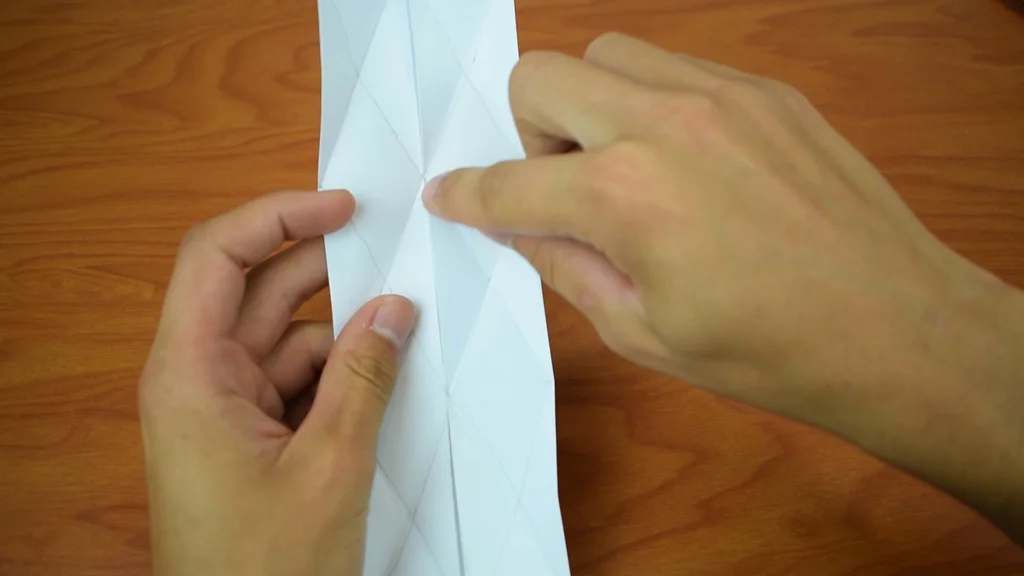
Forming the Flexagon
5. Open up the pocket formed by the two flaps at the ends of the strip. Then see if one side is narrower than the other. If it is, but the narrower side two square lengths into the wider end until the edge perfectly aligns with the second crease. The result should be a hexagonal ring.

6. Hold the ring such that the hole is parallel to the table surface. There should be a total of six horizontal lines on the strip when held in this position. Press inwards on both sides of the horizontal line. Do this for every other line. Once the three horizontal lines have been pressed inwards the model should look as follows.
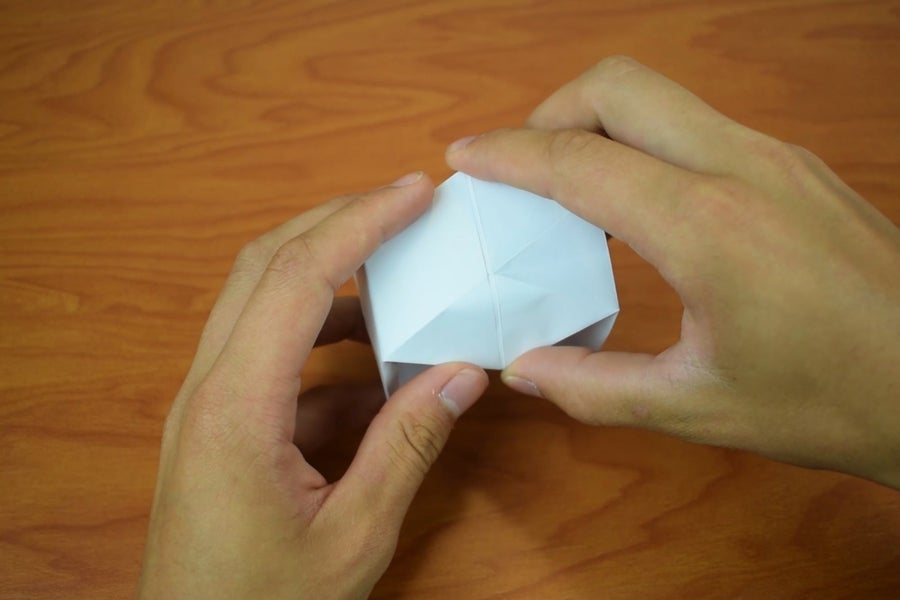
7. Make the ring horizontal. From this position, you will be able to see three points on the top and bottom of the ring. Pinch the two opposing points together, that is, one point on top and the point one directly below it. Keep pushing them together while simultaneously pushing back to the middle of the ring. The ring should easily fold along the premade folds. Repeat on the other points. Then your flexagon is ready.
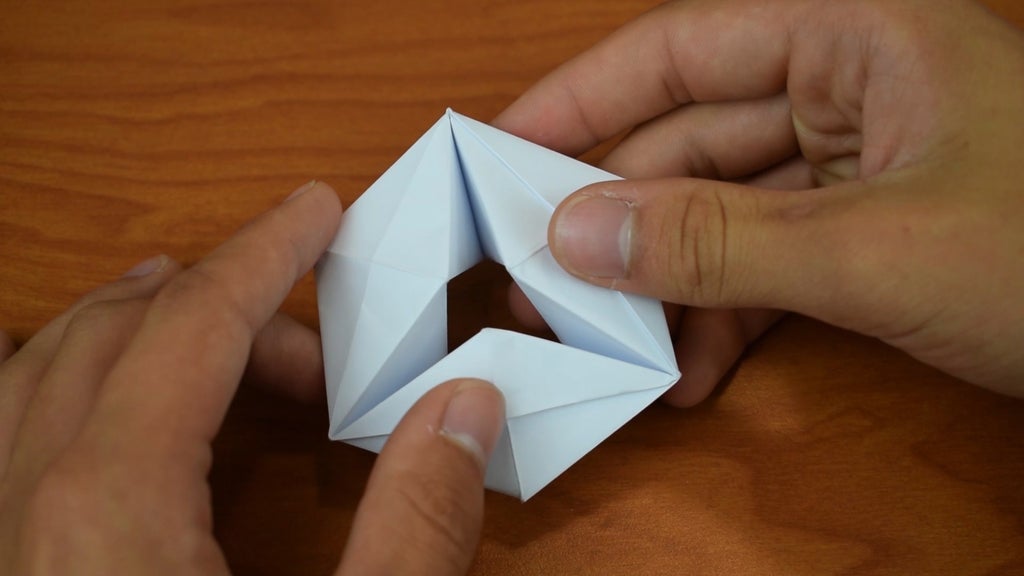
8. To play with your flexagon, start by slowly rolling the object through itself. This will allow the creases to align thus, decreasing your chance of tearing the paper. Once this movement becomes easier, you can go as fast as you would like.
Check the video below for more detailed instructions.
Benefits of Math Puzzles for Kids
Number puzzles make maths more enjoyable
Math games can help your child develop a liking for numeracy. They engage the player and help them see the purpose in what they are doing.
Math puzzles take away fear
There is no doubt that many kids find maths difficult. This creates a fear in their minds and thus, takes away the pleasure involved in solving problems. Math games help do away with this fear, making the subject feel less scary.
It helps your child understand diverse mathematical concepts
Mathematical games enable your child to grasp several mathematical principles from geometry to times tables. Furthermore, they can also help young kids master concepts that are an integral part of everyday life, like using money and telling the time.
They help build fluency
These activities help kids build fluency with numbers and thus, become more skilled at using them.
Math puzzles help develop critical and strategic thinking skills
Math games require the player to understand the rules and then find a solution to the problem. This process encourages problem-solving skills. As kids keep on playing such games, they learn how to think more strategically and push themselves forward.
They let children work at their level
Research shows that maths games allow children to work at their pace and level. Thus, in a group situation, one student might be encountering the concept for the first while another may be developing their understanding of the concept.
They improve learning
Playing mathematical games gives a significant boost to a child’s learning capacity. Games also increase the enthusiasm and enjoyment of Math and additionally, boost their confidence.
Math puzzle games teach transferable skills
Skills that children can learn and enhance through mathematical games have benefits in other areas of learning. They help build problem-solving skills, determination, logical thinking, the ability to cope with failure, and the use of language. Thus, these skills are useful across the curriculum and not just in math.
They boost spatial skills
Studies show that young children who engage in puzzles at home develop better spatial skills than those who don’t.
They assist test preparation
Maths challenges can help children develop skills they need for academic exams like the SATs, Year 7 CATs etc. These activities allow children to develop their reasoning skills and improve their memory. Furthermore, it helps build the understanding of non-verbal concepts like shape, space and number.
Math games help build friendships
Working together on math challenges is a great way for children to socialise and develop new friendships. Furthermore, working with a partner is also a great opportunity for children to practise conversing using mathematical language.
They increase your child’s earnings in future
A study showed that children who have strong maths skills at age 10 earn significantly more in their 30s.
How to use Math puzzles for your Kids?
Make sure the puzzles are at the right level for your child
Problems that are too easy will mean that your kids will get bored and thus, disengage from the lesson. On the other hand, if the problems are too difficult to solve, then they will get frustrated and give up early.
There is a time and a place for math problems
Math puzzles work great to reinforce mathematical concepts you kids have already learnt. Thus, rather of using them to teach new concepts use them for the above purpose instead. Furthermore, the math puzzles you use shouldn’t solely be based on mental maths skills, but on conceptual understanding.
Give your kids space to figure out the problem
Several experimental studies show that playful, exploratory learning results in the more creative and flexible use of materials than explicit training from an adult. Thus, you must give your kids space to struggle with a problem on their own before jumping in to help them. Kids learn more from coming up with their own reasoning than just watching you solve it for them.
Model puzzles for your children
Use interesting problems like the Mobius strip to amaze your children before pulling them into a discussion about the mathematical concept of the problem it represents.
FAQs
What is mathematical logic?
Math is not logic. Logic is a study of how things are related to and affect each other. However, there is something known as mathematical logic which is a part of the maths field. This field looks at how logic applies to math problems. Math logic governs many of the ways we think and study everything around us. Furthermore, it also helps us to develop new ways of running our society better.
What are math logic puzzles?
A math logical puzzle is a problem that is solved through deductive reasoning.
What are the different types of mathematical puzzles?
Math puzzles can be divided into different categories. They are as follows.
1. Numbers, arithmetic, and algebra. For example, KenKen
2. Combinatorial puzzles. For example, sudoku
3. Tiling, packing, and dissection. For example, tangram, Soma cube
4. Analytical or differential puzzles. For example, an ant on a rubber rope
5. Probability. For example, Monty Hall problem
6. Topology, knots, graph theory. For example,
7. Involves aboard. For example, chessboard tasks, peg solitaire
8. Mechanical mathematical puzzles. For example, Rubik’s cube
9. 0-player puzzles. For example, the flexagon
Where was the first math game played?
The oldest math games originated in the African region to the south of the Sahara.
What are the world’s greatest mathematical puzzles?
Archimedes Stomachion

The goal of the Archimedes Stomachion is to specify in how many different ways can 14 pieces be put together to form a square. This puzzle was solved in 2003 and mathematicians concluded the number to be 17,152.
Wheat on a chessboard problem
The Sissa’s Chessboard problem has been used for centuries to explain the nature of geometric growth It is also the earliest puzzle involving chess. According to legend, King Shirham declared a reward of one grain of wheat on the first square of a chessboard, two on the second square, four on the third, and so on. The question is, how many grains of sand would he have to give for all 64 squares on the board.
One way to determine the total is to calculate the sum of the first 64 terms of a geometrical progression, which results in 18,446,744,073,709,551,615 grains of wheat.
Share with your friends




